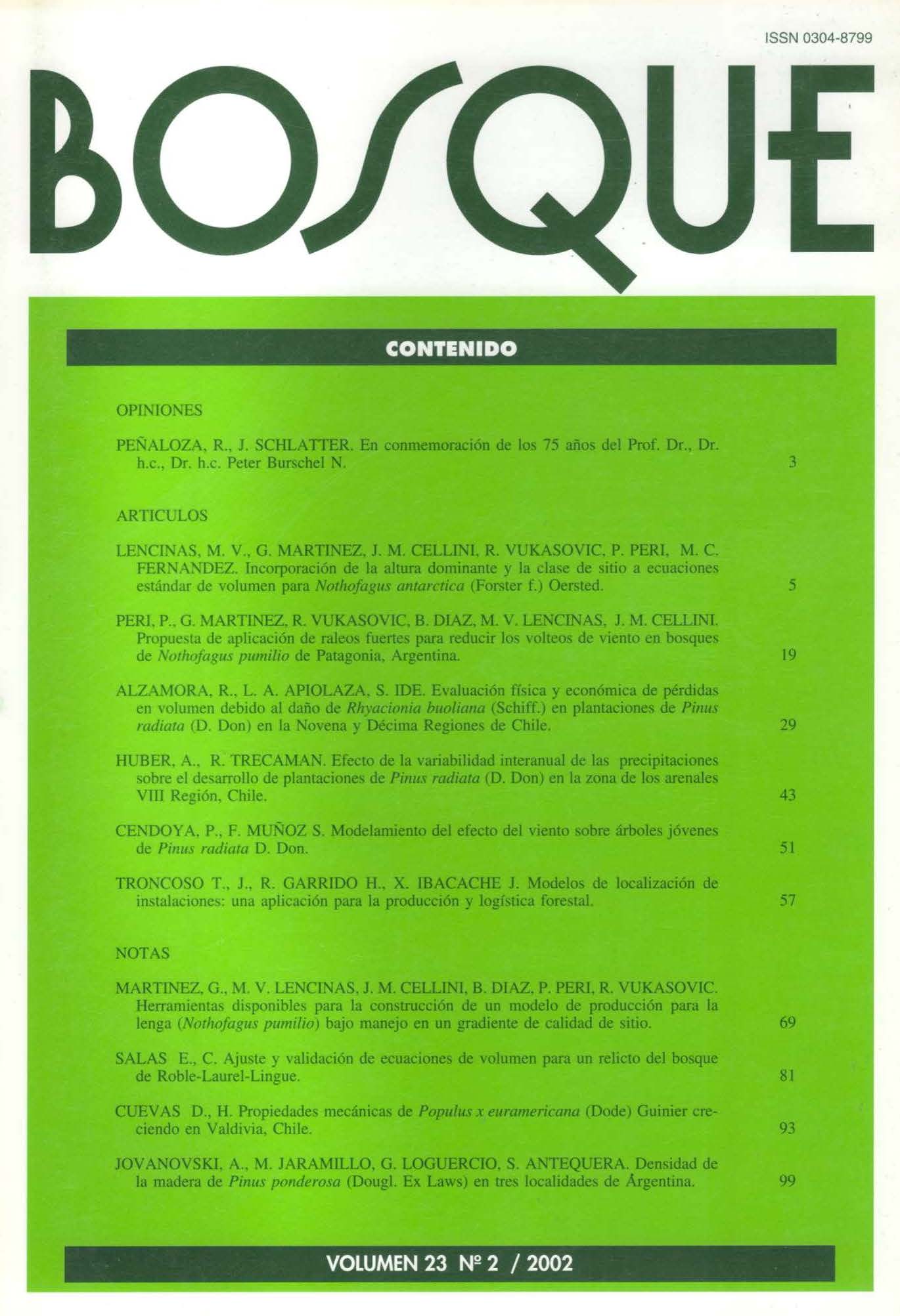The effect of the inter-annual variability of rainfall on the development of Pinus radiata (D. Don) plantations in the sandy soil zones of VIII region of Chile
Main Article Content
Abstract
The effects of the inter-annual variability of rainfall and different treatments on the water balance and the development of Pinus radiata (D. Don) plantations in sandy soils in the VIII region of Chile were analyzed. It was necessary to determine the quantity of rainfall that fell on the ground, the temporal variation of the edaphic water content, the net evapotranspiration and the development of the forests during two consecutive years that had a similar quantity of rainfall, but with a different temporal distribution. The study was carried out in two plantations of 12-year-old Pinus radiata with a planting density of 1,200 and 550 trees/ha, respectively. To determine the periodic variation of the increase in the basal area per hectare and the average per tree, the diameter of 25 trees was measured monthly. An inverse relationship between the planting density and the average diameter increase of the trees was noticed. This was principally because, in the sandy zones and especially during times of little rain, more rain reached the ground in the less dense plantation where canopy interception was less. The net evapotranspiration in both stands is practically the same and so one can deduce that the less dense plantation has a greater availability of water per tree, which affected the growth significantly. An important consideration that influenced the growth of both plantations during the two years was the soil water availability at the beginning of the period of greater growth. This is important if one considers that during summer there is very little rainfall.

